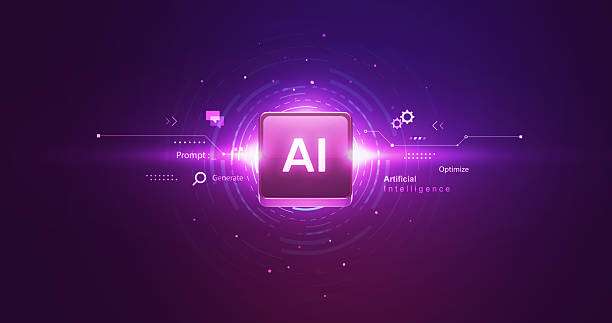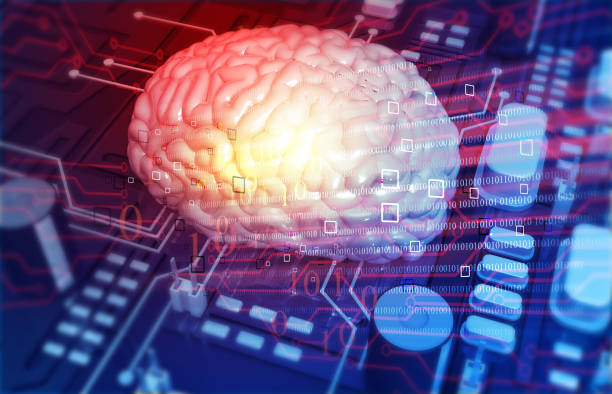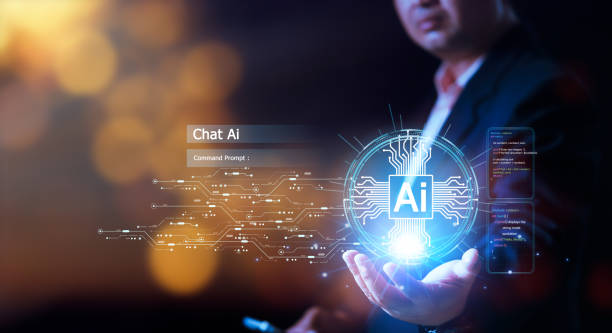What is an Artificial Intelligence Robot? Definitions and Basic Concepts
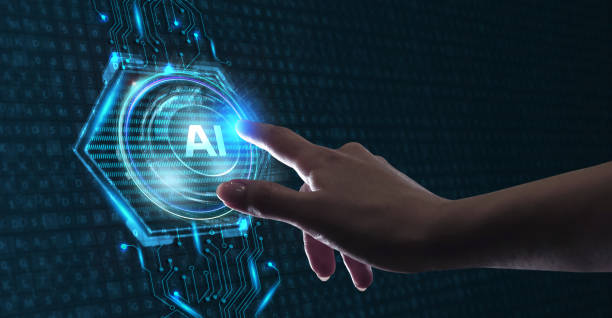
#Artificial Intelligence Robot is a combined system that utilizes artificial intelligence and robotics.
In other words, these robots are not only capable of performing physical tasks, but also can make decisions and act independently using artificial intelligence algorithms such as machine learning and natural language processing.
The exact definition of an artificial intelligence robot depends on its application and level of complexity, but in general, the goal of building these robots is to create systems that can perform complex tasks with high accuracy and speed.
Understanding basic artificial intelligence concepts such as #neural_networks, #genetic_algorithms, and #reinforcement_learning is essential for understanding how an artificial intelligence robot works.
These concepts allow robots to learn from their experiences, recognize patterns, and make better decisions.
An artificial intelligence robot understands its surroundings using sensors and cameras, and analyzes the collected information using image and speech processing algorithms.
These analyses help the robot to perform well in dynamic and unpredictable environments.
For more information, you can visit the Artificial Intelligence page on Wikipedia.
Is your online sales not what you expect? With Rasaweb, solve the problem of low sales and poor user experience forever!
✅ Increase the conversion rate of visitor to customer
✅ Create an enjoyable user experience and increase customer trust
⚡ Get free consultation now!
The Main Components of an Artificial Intelligence Robot and How They Work

An artificial intelligence robot consists of several key components, each responsible for a specific task. These components include:
- Sensors: For collecting information from the surrounding environment.
- Actuators: For performing physical actions.
- Processor: For analyzing information and making decisions.
- Artificial intelligence algorithms: For learning and adapting to new conditions.
The way an artificial intelligence robot works is that the sensors first collect the necessary information from the environment. Then, this information is transferred to the processor and analyzed using artificial intelligence algorithms. Based on the results of this analysis, the robot decides what action to take and sends the necessary commands to the actuators. This process is repeated continuously so that the robot can perform its tasks automatically and intelligently.
The use of #machine_learning allows the artificial intelligence robot to improve its performance over time and by collecting more data. These robots can learn from their mistakes and make better decisions in the future. Also, the use of #neural_networks allows robots to recognize complex patterns and perform well in complex and unpredictable environments.
Diverse Applications of Artificial Intelligence Robots in Various Industries
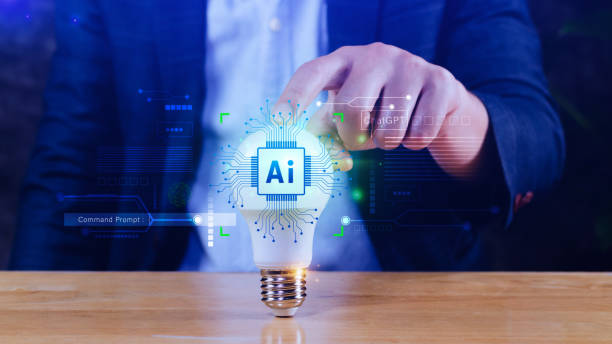
Artificial intelligence robots have many applications in various industries. In the #manufacturing industry, artificial intelligence robots can be used for automating production lines, quality control, and optimizing processes. In the #healthcare industry, these robots can be used for performing precise surgeries, caring for patients, and diagnosing diseases. In the #service industry, artificial intelligence robots can be used for providing customer service, delivering goods, and performing administrative tasks.
For example, in the manufacturing industry, an artificial intelligence robot can use #machine_vision to detect defective parts and remove them from the production line. This reduces costs and increases product quality. In the healthcare industry, an artificial intelligence robot can use machine learning algorithms to analyze medical images and diagnose diseases in their early stages. This increases the chances of patient recovery. Artificial intelligence robots with various capabilities are constantly advancing and accelerating tasks.
In the service industry, an artificial intelligence robot can act as a virtual assistant and answer customer questions. This reduces the workload of employees and increases customer satisfaction. In addition, artificial intelligence robots can be used for performing dangerous and difficult tasks such as cleaning up chemical materials and inspecting oil and gas pipelines. This reduces the risk of life and financial losses.
| Industry | Applications |
|---|---|
| Manufacturing | Automation, Quality Control |
| Healthcare | Surgery, Patient Care |
| Services | Customer Service, Delivery of Goods |
Challenges and Limitations of Using Artificial Intelligence Robots
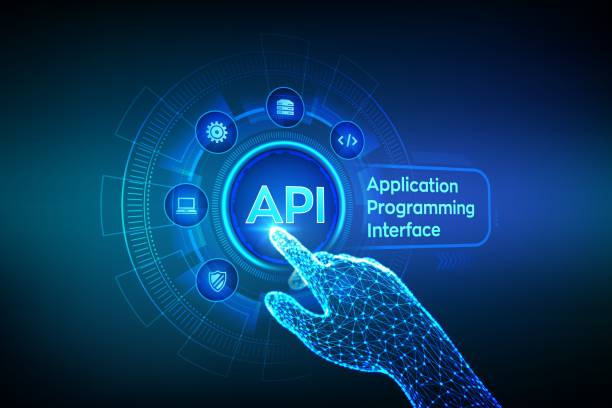
The use of artificial intelligence robots also comes with challenges and limitations. One of these challenges is the high cost of developing and deploying these robots. The design and construction of intelligent robots require high expertise and technical knowledge, which increases costs. Also, the maintenance and repair of these robots require specialized expertise and equipment.
Another challenge is the ethical and legal issues related to the use of artificial intelligence robots. The decisions made by these robots may have significant impacts on people’s lives, raising concerns about accountability and transparency. For example, if an artificial intelligence robot in a self-driving car causes an accident, determining responsibility for the accident can be very complex.
Technical limitations are another challenge in using artificial intelligence robots. Intelligent robots still have limitations in understanding and interpreting complex and uncertain information. Also, these robots may not perform well when faced with new and unexpected situations. To overcome these challenges, more research and development is needed in the field of artificial intelligence and robotics. Artificial intelligence robots are overcoming these challenges with technological advances.
Does your company’s website perform as it should for your brand? In today’s competitive world, your website is your most important online tool. Rasaweb, a specialist in designing professional corporate websites, helps you to:
✅ Attract customer credibility and trust
✅ Turn website visitors into customers
⚡ Get a free consultation!
The Future of Artificial Intelligence Robots: Predictions and Key Trends

The future of artificial intelligence robots is very bright and full of new opportunities. With technological advancements, intelligent robots will be able to perform more complex tasks and play a more important role in various industries. It is predicted that in the near future, artificial intelligence robots will play a prominent role in areas such as #telehealth, #virtual_education, and #personalized_services.
One of the key trends in the field of artificial intelligence robots is the development of #collaborative robots (Cobots). These robots are designed to work alongside humans and assist them in performing tasks. Collaborative robots can perform repetitive and tedious tasks, allowing humans to focus on more creative and complex tasks.
Another trend is the development of #self_learning robots. These robots are able to learn from their experiences and improve their performance without the need for reprogramming. These robots can perform well in dynamic and unpredictable environments. Artificial intelligence robots are constantly evolving and progressing.
Types of Artificial Intelligence Robots in Terms of Application and Structure

Artificial intelligence robots can be classified into different types based on application and structure. In terms of application, robots can be divided into the following categories:
- Industrial robots: For automating production lines and performing repetitive tasks.
- Service robots: For providing services to customers and performing administrative tasks.
- Medical robots: For performing precise surgeries and caring for patients.
- Military robots: For performing reconnaissance and military tasks.
In terms of structure, robots can be divided into the following categories:
- Fixed robots: That are located in a fixed location and perform their tasks in the same location.
- Mobile robots: That are able to move in their surrounding environment and can perform their tasks in different locations.
- Humanoid robots: That are designed to resemble humans and are able to perform human tasks.
Each of these types of robots has its own specific features and applications and is chosen based on the specific needs of each industry and organization. Artificial intelligence robots with a wide variety cover different needs.
Comparison of Artificial Intelligence Robots with Other Automation Systems
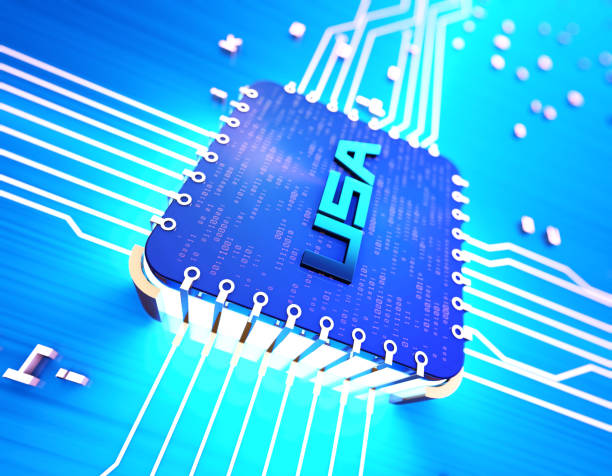
Artificial intelligence robots have fundamental differences from other automation systems. Traditional automation systems usually operate based on pre-determined programs and are not able to adapt to new conditions. In contrast, artificial intelligence robots are able to learn from their experiences and improve their performance using machine learning algorithms. This capability allows artificial intelligence robots to perform well in dynamic and unpredictable environments.
Another difference is that traditional automation systems are usually designed to perform simple and repetitive tasks, while artificial intelligence robots are able to perform more complex tasks. For example, an artificial intelligence robot can interact with humans and answer their questions using #natural_language_processing. This capability does not exist in traditional automation systems.
In summary, artificial intelligence robots have more capabilities than traditional automation systems and can play a more important role in various industries. Artificial intelligence robots are becoming more efficient day by day with the advancement of artificial intelligence.
| Feature | Traditional Automation System | Artificial Intelligence Robot |
|---|---|---|
| Adaptability | Limited | High |
| Complexity of Tasks | Simple and Repetitive | Complex |
| Interaction with Humans | Limited | High |
Important Points in Designing and Developing Artificial Intelligence Robots
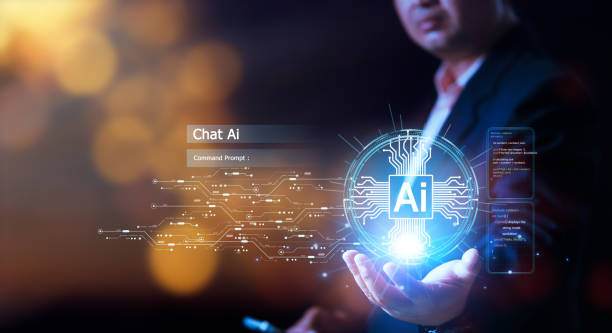
Designing and developing artificial intelligence robots requires attention to important points. One of these points is choosing the right artificial intelligence algorithms for the intended application. There are different machine learning algorithms, each suitable for a specific type of data and tasks. Choosing the right algorithm can have a significant impact on the robot’s performance.
Another point is collecting enough high-quality training data. Machine learning algorithms need a lot of data to learn. The more training data there is and the better the quality, the better the robot can recognize patterns and make better decisions. Also, paying attention to security issues and protecting data privacy is very important. Artificial intelligence robots need appropriate data.
In addition, designing a suitable user interface for human interaction with the robot is very important. The user interface should be simple and understandable so that the user can easily interact with the robot and give it the necessary commands. Also, paying attention to ethical and legal issues related to the use of artificial intelligence robots is essential. Designers and developers must ensure that the robot acts in the best interests of humans and respects their rights.
Is your online store ready to attract maximum customers and increase sales? Rasaweb transforms your online business with modern and efficient online store designs.
✅ Increased speed and improved SEO
✅ Excellent user experience on mobile and desktop⚡ Get a free online store design consultation from Rasaweb!
The Impact of Artificial Intelligence Robots on the Labor Market and Employment

The entry of artificial intelligence robots into the labor market will have a significant impact on employment. On the one hand, these robots can increase productivity and reduce costs, which can lead to the creation of new job opportunities. For example, with the increasing use of intelligent robots in the manufacturing industry, the need for specialists to design, develop, and maintain these robots increases.
On the other hand, artificial intelligence robots can replace some jobs. Repetitive and simple tasks that were previously performed by humans can now be performed by robots. This can lead to a decrease in demand for some jobs and an increase in unemployment rates. To address this challenge, there is a need to educate and retrain the workforce and prepare them for new jobs. Artificial intelligence robots are facing changes in the labor market.
In addition, appropriate policies need to be adopted to manage the impact of artificial intelligence robots on the labor market. These policies may include providing free education, creating new job opportunities, and supporting entrepreneurship. The aim of these policies is to ensure that everyone benefits from the benefits of artificial intelligence robots and that no one is harmed by technological advances. For more information in this area, you can visit the ISNA website.
Innovative Perspectives in the Development of Artificial Intelligence Robots

The development of artificial intelligence robots has always been accompanied by innovative perspectives. One of these perspectives is the development of self-aware robots. These robots will be able to understand and respond to human feelings and emotions. This capability can be very useful in areas such as caring for the elderly and educating children. However, the development of self-aware robots comes with many ethical and technical challenges.
Another perspective is the development of #nanobots. These robots are built on a nanometer scale and can move inside the human body and treat diseases. Nanobots can deliver medication directly to diseased cells and prevent the side effects of traditional medications. This technology is still in the early stages of development, but it has a lot of potential to improve human health. Nano artificial intelligence robots can create huge changes in the near future.
In addition, the development of space robots is one of the attractive perspectives in the field of artificial intelligence robots. These robots can be used for exploring other planets and conducting scientific research in space. Space robots must be able to operate independently and perform their tasks in the harsh and unpredictable conditions of space. This requires the development of advanced artificial intelligence algorithms and precise navigation systems.
Finally, advances in the field of artificial intelligence robots offer a new perspective for humanity. These advances can lay the groundwork for fundamental changes in human life.
Frequently Asked Questions
| Question | Answer |
|---|---|
| What is an Artificial Intelligence Robot? | An Artificial Intelligence (AI) Robot is a machine capable of understanding its environment, reasoning, learning, and making decisions to perform tasks independently. |
| What is the difference between regular robots and AI robots? | Regular robots perform repetitive tasks based on prior programming, while AI robots can learn from experience, interact dynamically with the environment, and even behave in a way that mimics human intelligence. |
| What are the main applications of AI robots? | They are used in industries (manufacturing, assembly), medicine (surgery, diagnostics), services (customer support, domestic), exploration (space, underwater), and many other fields. |
| What technologies are used in the construction of AI robots? | Machine Learning, Computer Vision, Natural Language Processing, Deep Learning, and Robotics are among the key technologies. |
| Can AI robots have feelings? | Currently, robots do not have feelings in the human sense. They can recognize and react to emotions, but they do not experience emotions themselves. |
| What are the main challenges in developing AI robots? | Safety, reliability, ethics, autonomy, adaptability to complex environments, and natural interaction with humans are important challenges. |
| How are AI robots trained? | They are usually trained using large volumes of data, machine learning algorithms, and deep learning to identify patterns and make decisions. |
| Examples of AI robots in everyday life? | Smart robotic vacuum cleaners, customer support chat bots, self-driving cars, and surgical robots in hospitals. |
| Are AI robots a threat to human jobs? | Some repetitive jobs may be automated, but at the same time, robots can increase productivity and create new jobs in the development, maintenance, and monitoring of these systems. |
| How is the future of AI robots predicted? | They are expected to become smarter, more autonomous, and capable of performing more complex tasks, and to interact more closely with humans in different environments. |
And other services of Rasa Web Advertising Agency in the field of advertising
Intelligent Digital Branding: An effective tool for online growth with the help of attractive user interface design.
Intelligent Website Development: A new service to increase campaign management by optimizing key pages.
Intelligent SEO: An effective tool to attract customers with the help of real data.
Intelligent Sales Automation: An exclusive service to improve SEO rankings based on accurate audience targeting.
Intelligent Content Strategy: Transform your SEO ranking with the help of intelligent data analysis.
And more than hundreds of other services in the field of internet advertising, advertising consulting, and organizational solutions
Internet Advertising | Advertising Strategy | Advertorial Report
Resources
Artificial Intelligence on IBM
,Artificial Intelligence on Gartner
,What is Artificial Intelligence?
,Concerns and Challenges of Artificial Intelligence
? Are you ready to transform your business in the digital world? Rasaweb Digital Marketing Agency, specializing in custom website design, SEO, and digital marketing strategies, paves the way for your success. Contact us today and build your digital future.
📍 Tehran, Mirdamad Street, next to Central Bank, South Kazerun Alley, Ramin Alley No. 6

